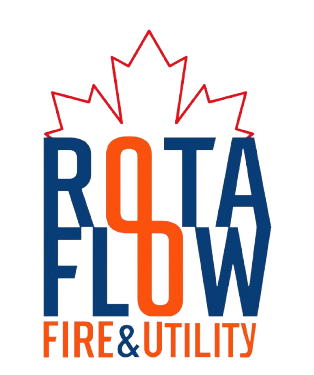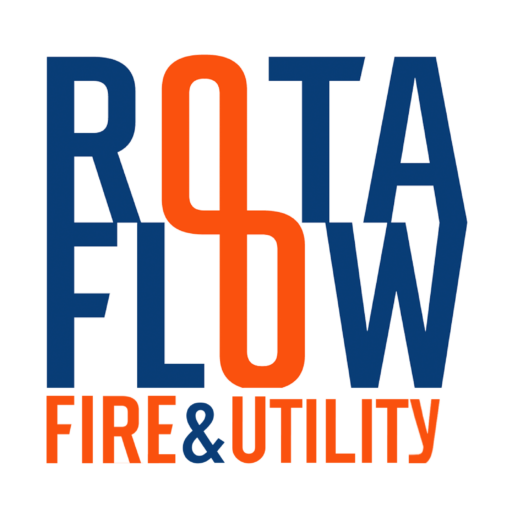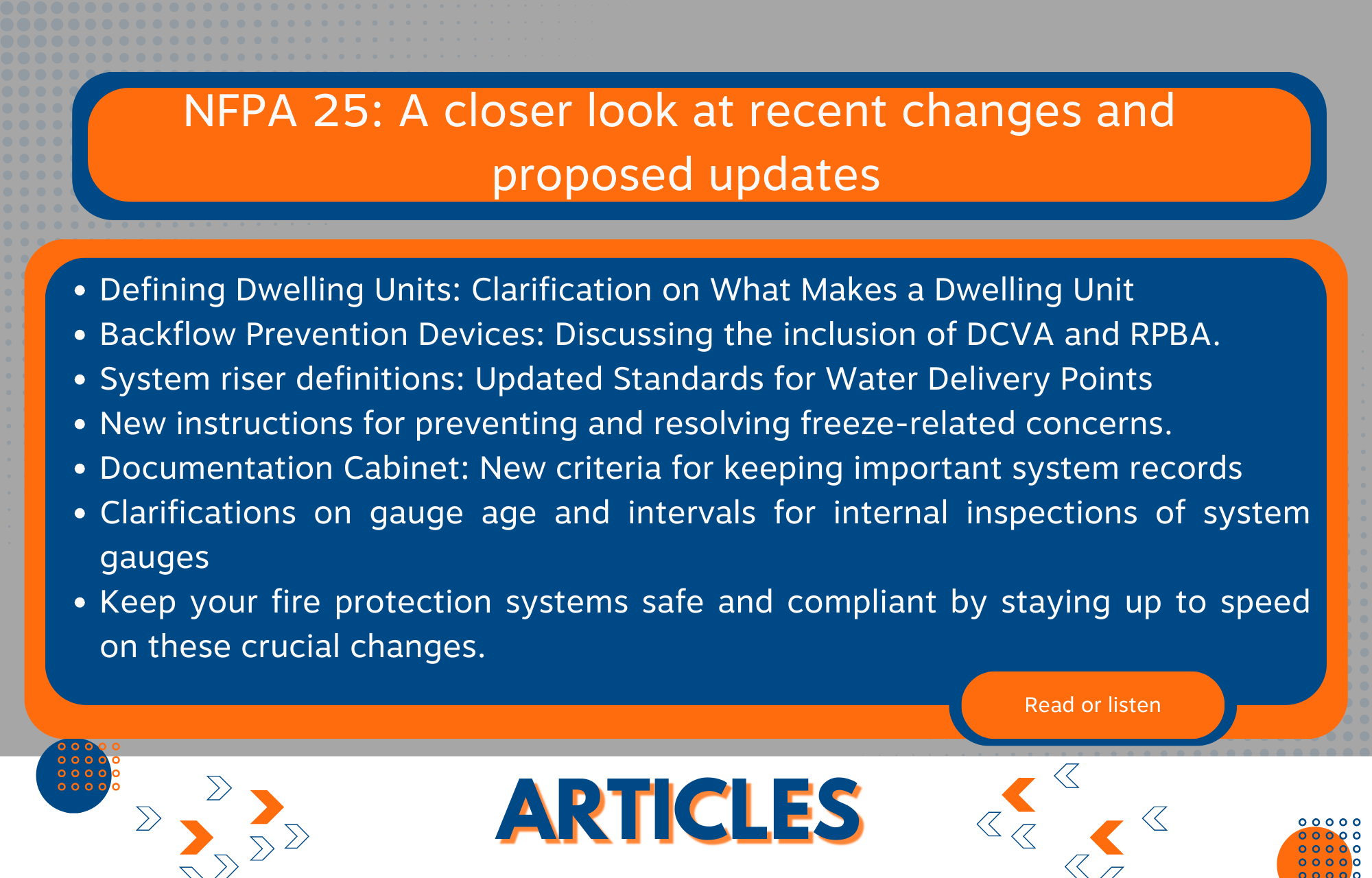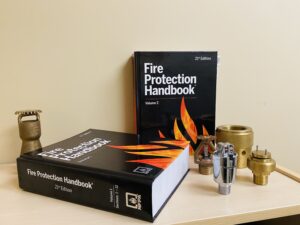Introduction: Changing business needs and public comments are guiding NFPA 25, the standard for inspecting, testing, and maintaining water-based fire prevention systems, towards Some of the significant proposed enhancements and changes under discussion will be covered in this blog article.
Among the most hotly contested subjects is the definition of a “dwelling unit.” A clear definition would help to promote uniformity and clarity, according several public remarks. This topic was discussed back and forth, and because of insufficient data the committee opted to reject the first proposals. Still, the issue is still under discussion as the public comment period runs.
The definition of backflow preventing devices also comes under more focus. Public comments have pushed for the elimination of less often inspected references to Double Check Valve Assemblies (DCVA) and Reduced Pressure Backflow Assembly (RPBA). Although the standard does not particularly address these devices, their placement in an annexe has caused concern.
Suggested changes cover the definition of a system riser, guidelines for frozen systems, maintenance plans, the need of a documentation cabinet, system gauges, and internal inspections of several kinds of sprinkler systems. These changes are meant to make water-based fire protection systems more safe, clear, and effective.
It’s important to be aware of the revisions as they work through and how they can affect your company. Though for the most current information, do consult the official NFPA 25 standard; this page offers a quick overview of some of the significant advancements.
Dwelling Unit Definition:
Public Input (PI) No. 152 suggests adding a definition for “dwelling unit.” This idea is based on PI No. 151, which advises replacing all standard response sprinklers in a dwelling, and PI No. 150, which proposes replacing sprinklers older than 75 years. The committee rejected the recommendations due to inadequate data proving the need for such measures. Additional testing and a report have been completed since the initial draft. The matter has been resurrected during the public comment phase, which is the next step in the process.
Backflow Prevention Device Definitions:
Several public inputs suggested removing the mention of Double Check Valve Assemblies (DCVA) and Reduced Pressure Backflow Assembly (RPBA) backflow preventors, which are only inspected internally every five years. The standard does not directly address the DCVA or RPBA, except in an annexe comment.
System Riser Definition:
PI No. 137 includes a definition of a system riser. The system riser is commonly referred to as the point of entry for water delivery into a structure. This definition was originally added to NFPA 13 and later incorporated into NFPA 25 for this edition. A riser is a horizontal or vertical pipe that connects the water supply to the mains or cross-mains and has a control valve. Each floor control valve assembly is considered a riser, necessitating the installation of both a hydraulic and general information sign on each floor. Please note that systems installed before the 2007 edition of NFPA 13 require an information sign, not a generic information sign.
Frozen System Guidance:
PI No. 172 outlines standards for when a system freezes and includes annexe language. To ensure safety, inspect all piping, fittings, and components for damage or abnormalities, test the system with air, and do hydrostatic tests, among other things.
Repair Timelines: PI No. 16 suggests repair times for critical, non-critical, and degraded systems. The NFPA 1 Fire Codes for 2021 and 2024 have similar compliance standards. The technical committee’s remarks led to the rejection of the original PI language, which will be addressed in the second edition. The committee will consider the amended language during its September 2nd draft meeting.
Documentation Cabinet:
The 2025 edition of NFPA 13 will mandate the construction of a documentation cabinet on new installations to preserve necessary documentation, including acceptance tests, as-builts, and hydraulic data plates. PI No. 12 included an inspection requirement for this cabinet; however, the 2nd draft meeting will address whether NFPA 25 should mandate this inspection and whether it should be retroactive.
System Gauges:
NFPA 25 does not specify when a gauge is deemed new; however, it is commonly assumed to be new until it is put into operation. PI No. 23 clarifies that the production date and shelf life of a gauge do not determine its age. The clock starts once the gauge is fitted.
Internal Inspections: Public feedback was received about internal inspections of dry, precipitation, and deluge systems. Currently, dry pipe valves must be opened annually, regardless of how they are reset. Preaction and deluge valves can be inspected inside every 5 years if reset externally. Although the first two updates remove the 5-year internal restrictions, the standard still requires annual valve openings. After acceptance, a PI becomes a First Revision (FR) and is approved by the committee through a ballot process.
Conclusion: As NFPA 25 evolves, it is important to stay up to date on the most recent modifications and how they may affect your organisation. The improvements mentioned in this blog article cover critical topics such as dwelling unit definitions, backflow protection devices, system riser definitions, and inspection requirements.
Understanding these updates allows you to guarantee that your water-based fire protection systems are inspected, tested, and maintained in accordance with the most recent requirements. This not only protects your property, but also the lives of those who dwell in your building.
It is suggested that you evaluate the NFPA 25 standard on a regular basis and consult with trained professionals to stay current on new developments and ensure that your systems satisfy all applicable standards.
Courtesy: Vincent, NFSA’s Inspection, Testing, and Maintenance Specialist



